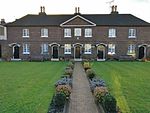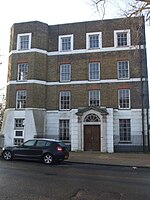St Matthias Church, Richmond

St Matthias Church is a Grade II listed Anglican church in Richmond, London. It was built in the Victorian Gothic style in 1857, and is described by Bridget Cherry and Nikolaus Pevsner as "the grandest church in Richmond". The architect was George Gilbert Scott.The church is dedicated to Saint Matthias who was, according to the Acts of the Apostles, chosen by the apostles to replace Judas Iscariot following the latter's betrayal of Jesus and his subsequent death. The church building is located at the top of Richmond Hill at the intersection of Friars Stile Road, Kings Road, and Church Road. At 195 feet (59 m), the spire of the church is a familiar landmark for miles around. The church was renovated in the 1970s by the architects Hutchison, Locke & Monk.St Matthias' Church is part of the Richmond Team Ministry, which also includes the churches of St John the Divine and St Mary Magdalene.
Excerpt from the Wikipedia article St Matthias Church, Richmond (License: CC BY-SA 3.0, Authors, Images).St Matthias Church, Richmond
Mount Ararat Road, London North Sheen (London Borough of Richmond upon Thames)
Geographical coordinates (GPS) Address External links Nearby Places Show on map
Geographical coordinates (GPS)
| Latitude | Longitude |
|---|---|
| N 51.4567 ° | E -0.2958 ° |
Address
Saint Matthias
Mount Ararat Road
TW10 6PN London, North Sheen (London Borough of Richmond upon Thames)
England, United Kingdom
Open on Google Maps










